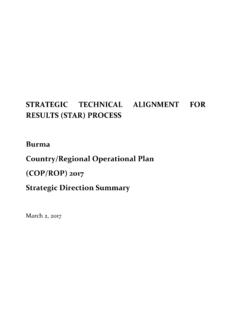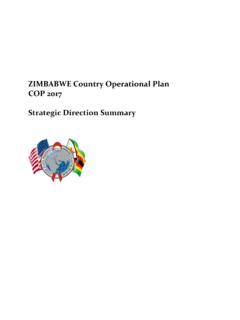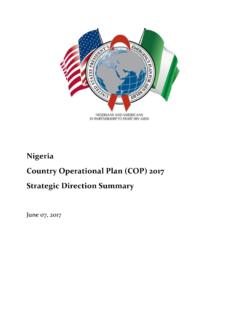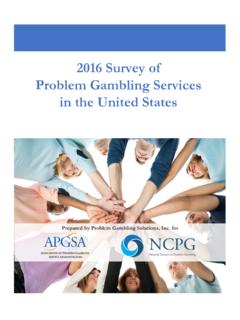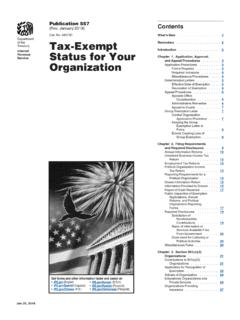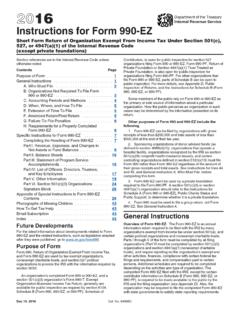Transcription of THE HIV/AIDS SUSTAINABILITY
1 0 THE HIV/AIDS SUSTAINABILITY INDEX AND DASHBOARD Guidance to PEPFAR Country Teams September 18, 2017 MEASURING SUSTAINABILITY FOR PLANNING, IMPLEMENTATION AND TRACKING 1 Table of Contents SUSTAINABILITY Index and Dashboard Overview .. 2 Measuring the SUSTAINABILITY Domains and Elements .. 3 Process for Populating the Index and Dashboard .. 3 Reflection and Informing the COP Process .. 9 Narrative Cover Sheet .. 10 Submitting the Completed 10 Public Display of Completed SIDs .. 10 HQ Support .. 10 Appendix A: Top Changes from SID to SID .. 11 Appendix B: Template for Narrative Cover Sheet .. 13 2 THE SUSTAINABILITY INDEX AND DASHBOARD USER GUIDE SUSTAINABILITY Index and Dashboard Overview SUSTAINABILITY is a critical element of PEPFAR s approach to reaching and maintaining epidemic control. Understanding SUSTAINABILITY challenges and opportunities is important for all country-level stakeholders to know where to invest both focus and resources to accelerate progress towards sustaining control of the HIV epidemic.
2 To assist PEPFAR Teams, government partners, and other stakeholders in making informed investment decisions around SUSTAINABILITY and to monitor progress, S/GAC and an interagency working group designed a tool, the SUSTAINABILITY Index and Dashboard (SID), to assess the state of SUSTAINABILITY of the national HIV/AIDS response in PEPFAR countries and monitor its progress over time across four domains and fifteen elements. The SID is intended to: 1. Support countries understanding of their SUSTAINABILITY landscape; 2. Inform priority areas for PEPFAR investment in countries and monitor progress; 3. Serve as a diplomatic advocacy or negotiation tool to dialogue with partner government and multilateral counterparts; and 4. Communicate progress towards sustained epidemic control to external stakeholders Now in its third iteration as a core data stream for planning, monitoring, and decision making, the SID has been revised and refined through an interagency process coordinated by S/GAC.
3 The updated tool, referred to here as SID , reflects feedback received from field staff, headquarters staff, subject matter experts from PEPFAR implementing agencies, multilateral partners and representatives of civil society. As SID was designed as a baseline for SUSTAINABILITY trend analysis, revisions made in SID were limited for continuity and comparability. Revisions in SID were made in critical areas or to keep the tool current. For an overview of the most notable changes in SID , see Appendix A . This SID Guidance provides PEPFAR Teams with detailed instructions on how to administer the SID All standard process and STAR process programs are expected to complete the SID 3 .0 in a participatory manner. Regional programs are not expected to complete the SID 3 .0 for the entire region; however, they are required to complete the SID for 1-2 countries within the regional program, prioritizing countries that represent the preponderance of PEPFAR regional funding and/or where donor funds for HIV/AIDS are already or are soon projected to decline.
4 Teams should plan to complete and submit the SID by November 21, 2017, so that its results may inform the FY17 Q4 POART process, including the Table 6, which teams will use to determine program support and systems level interventions in which PEPFAR will invest to achieve sustained epidemic control. More detailed information and instructions on linking the SID results to Table 6/FOIT will be made available in the COP guidance. The SID 3 .0 is an excel-based tool. The SID Excel workbook includes: (1) Summarized instructions on how to complete the Index and dashboard; (2) An auto-generated dashboard; (3) A set of four domain 3 Strategic Information 13. Epidemiological and Health Data 14. Financial and Expenditure Data 15. Performance Data Strategic Investments, Efficiency and Sustainable Financing 11. Domestic Resource Mobilization 12.
5 Technical and Allocative Efficiencies National Health System and Service Delivery 6. Service Delivery 7. Human Resources for Health 8. Commodity Security and Supply Chain 9. Quality Management 10. Laboratory Governance, Leadership and Accountability 1. Planning and Coordination 2. Policies and Governance 3. Civil Society Engagement 4. Private Sector Engagement 5. Public Access to Information tabs comprised of a series of questions/indicators under each of the 15 SUSTAINABILITY elements; and (4 ) A series of tabs containing data for country-specific contextual charts displayed on the dashboard tab. Measuring the SUSTAINABILITY Domains and Elements The SID 3 .0 measures four domains and fifteen core elements required for sustained epidemic control, as depicted in Figure 1. If any one of the elements is not sustainable, the epidemic may be at risk of backsliding when the country eventually graduates from external assistance.
6 SID retains all elements from SID Figure 1: SUSTAINABILITY Domains (four) and Elements (fi fteen) Process for Populating the Index and Dashboard 1. Planning and Participation The SID should be completed and submitted to S/GAC prior to the country s FY17 Q4 POART call or no later than November 21, 2017. It is important to recognize at the outset that the SID findings only reflect part of the tool s value: the process for completing the SID and the analysis and discussion it entails are as significant as the scores themselves. Countries that used a participatory process for completing the SID found the dedicated dialogue to be a positive experience that was 4 enthusiastically received by stakeholders. PEPFAR Teams are expected to engage diverse country stakeholders to complete the SID as part of the SID process, reinforcing that the SID represents an opportunity for all partners to jointly identify and prioritize vulnerabilities and strengths of the national response, with the aim of advancing the shared goal of SUSTAINABILITY .
7 Because the SID requires broad stakeholder engagement and supports a national dialogue, S/GAC and UNAIDS are formally coordinating to foster co-leadership of the stakeholder implementation at the country level. Teams should consider the following factors as they start to plan the implementation of SID : Front Office Engagement: An important lesson learned from previous SID implementations was that early engagement of senior partner government counterparts by Embassy leadership ( the Chief of Mission or Deputy Chief of Mission) can be extremely valuable in securing partner government buy-in, dispelling misconceptions, and framing the SID as a mutual exercise rather than an outside report card . It is critical to convey that the SID does not determine the overall size of the annual PEPFAR resource envelope in a country; rather, as noted above, it is intended to help identify priorities and inform PEPFAR investments within that resource envelope.
8 Role of UNAIDS: The SID implementation process revealed that co-convening of stakeholders with UNAIDS proved to be a best practice. For SID , it is expected that PEPFAR country teams will work with local UNAIDS country offices to co-convene the process for completing the SIDs. Significant positive coordination with UNAIDS has occurred at the HQ level to enable this process. PEPFAR teams should reach out to their UNAIDS counterparts in- country at the earliest convenience in order to begin planning the needed activities to gather and prepare all resource material, organize the SID-completion workshop, and facilitate the multi-stakeholder meeting. Participatory Process: The participatory process of completing the SID should include the partner government (all relevant ministries, including Ministry of Health and Ministry of Finance, and parliamentarians) and key stakeholders, including civil society, private sector, and other bilateral and multilateral ( , Global Fund, World Bank) donors.
9 Depending on your country context, it may be appropriate to build upon an existing event or process; for example, leveraging already planned in-country planning meetings or strategic planning events held with government and key stakeholders. SUSTAINABILITY working groups led by the government, PEPFAR, or multilateral organizations may also provide an appropriate forum. Part of the benefit of a participatory SID workshop is that it serves as one of the first stakeholder meetings ahead of COP planning. PEPFAR teams are encouraged to consider ways for leveraging SID discussions both from a monitoring progress perspective and to identify key issues for COP planning. Gathering Data: Assembling information needed to complete the SID likely will take some time. It is strongly recommended that source documents and data be gathered in advance in order to anchor discussions of the individual indicators.
10 The data sources cited within your completed 5 SID would be a useful starting point. Country teams are encouraged to with all stakeholders to ensure data gathering includes all relevant data sources. Timing: PEPFAR teams should complete the SID in advance of their FY17 Q4 POART call or no later than November 21, 2017. The SID tool will be released to PEPFAR teams on September 18, 2017, which gives teams flexibility to schedule the SID completion process within an eight-week period. Meeting Organization: To reduce the response burden for participants in the SID completion process, it is recommended that separate subgroups be organized according to the four SID domains, comprised of individuals that work on and are knowledgeable of each respective area. However, this does not preclude a collaborative process. All relevant stakeholders should be included in each subgroup.
